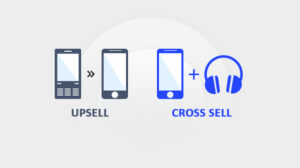Web analytics is the process of collecting, measuring, analyzing, and reporting web data to understand and optimize web usage. It helps businesses and website owners gain insights into user behavior, engagement, and preferences on their websites. By analyzing this data, businesses can make informed decisions to improve website performance, user experience, and overall online marketing strategies.
Web analytics enables businesses to track key performance indicators (KPIs) such as unique visitors, page views, bounce rate, conversion rate, and more. It plays a crucial role in optimizing marketing campaigns, enhancing user engagement, and driving conversions, ultimately leading to increased revenue and business growth.
Web Analytics Use Cases and Examples
Nine web analytics use cases with examples, metrics and techniques:
| Use Case | E-commerce Example | Business Metric | Technique |
| Customer Acquisition Analysis | An online electronics store analyzes the cost of acquiring new customers from social media vs. email marketing | Customer Acquisition Cost | Cohort Analysis |
| Personalized Marketing | A clothing retailer groups customers who frequently view workout gear and sends them targeted promotions | Click-Through Rate | Behavioral Segmentation |
| Content Customization | An online bookstore customizes the homepage for each visitor based on their reading interests and preferences | Average Time on Site | Psychographic Segmentation |
| Checkout Process Improvement | A cosmetics e-commerce store tests a single-page checkout versus a multi-step process to increase conversions | Conversion Rate | Conversion Rate Optimization |
| Subscription Retention | A meal-kit delivery service identifies reasons for cancellations and adjusts its offerings to retain customers | Churn Rate | Churn Analysis |
| Customer Loyalty Program | A home goods store analyzes repeat purchase behavior and offers a rewards program to increase customer loyalty | Customer Retention Rate | Customer Retention Analysis |
| Customer Journey Analysis | A travel accessories store studies the path customers take from landing on the site to making a purchase | Bounce Rate, Conversion Rate | Customer Journey Analysis |
| Customer Lifetime Value Optimization | A pet supplies e-commerce store develops personalized offers for high-value customers to increase their spending | Customer Lifetime Value | CLV Optimization |
| Cross-selling and Up-selling | An online furniture store recommends complementary products or higher-priced alternatives to customers | Average Order Value | Cross-selling & Up-selling |
Web Analytics Metrics
Here are the 25 key metrics for your website business:
| Metric | Dimension | Description |
| Abandoned Cart Rate | Product, Cart Value, User ID | The percentage of users who add items to their cart but do not complete the checkout process |
| Average Order Value (AOV) | Product, Quantity, Order Value, Traffic Source | The average value of each order placed on your e-commerce website, calculated by dividing total revenue by the number of orders |
| Revenue per Visitor (RPV) | User ID, Order Value, Traffic Source | The average revenue generated per visitor to your e-commerce website, calculated by dividing total revenue by the number of unique visitors |
| Cart Conversion Rate | Product, Cart Value, User ID | The percentage of users who add items to their cart and successfully complete the checkout process |
| Product Views | Product, Product Category, Product Attribute | The number of times a specific product is viewed by users |
| Product Conversion Rate | Product, Product Category, Product Attribute | The percentage of users who view a product and then complete a purchase |
| Sales by Product Category | Product Category, Order Value, Quantity | The revenue generated by each product category, useful for identifying popular or underperforming categories |
| Sales by Traffic Source | Traffic Source, Order Value, Quantity | The revenue generated by each traffic source, which can help optimize marketing efforts for channels driving the highest sales |
| Coupon Usage Rate | Coupon Code, Order Value, User ID | The percentage of orders that use a coupon code, providing insights into the effectiveness of promotional strategies |
| Return Rate | Product, Return Reason, User ID | The percentage of orders that result in a product return, which can help identify issues with product quality, customer satisfaction, or shipping |
| Customer Lifetime Value (CLV) | User ID, Order History, Revenue, Traffic Source | The predicted total revenue generated by a customer over the course of their relationship with your e-commerce brand |
| Page Views | URL, Page Title | The number of times a specific page is viewed by users |
| Unique Visitors | User ID, IP Address | The number of distinct individuals visiting a website during a specified period |
| Bounce Rate | URL, Page Title | The percentage of single-page sessions, where users leave without interacting with the page |
| Conversion Rate | Goal, Conversion Funnel | The percentage of visitors who complete a desired action (e.g., making a purchase, signing up for a newsletter) |
| Average Session Duration | Device, Browser, Location, Traffic Source | The average length of time users spend on the website during a single session |
| Pages per Session | Device, Browser, Location, Traffic Source | The average number of pages viewed by a user during a single session |
| New vs. Returning Users | Device, Browser, Location, Traffic Source | The ratio of first-time visitors to returning visitors |
| Traffic Sources | Source (e.g., organic, referral, social, email, paid) | The origin of website traffic, allowing you to identify how users find your website |
| Device Usage | Device Type (e.g., desktop, mobile, tablet) | The types of devices users utilize to access your website, highlighting the need for a responsive website design |
| Geographic Location | Country, City, Region | The geographic distribution of your website visitors, which can be useful for localizing content and targeting marketing efforts |
| Browser & Operating System | Browser, Operating System | The browser and operating system used by visitors, which can help identify potential compatibility or performance issues |
| Click-through Rate (CTR) | Campaign, Ad Group, Keyword | The percentage of users who click on an advertisement or link, used to measure the effectiveness of marketing campaigns |
| Exit Rate | URL, Page Title | The percentage of users who leave your website from a specific page, providing insights into potential issues with content or navigation |
| User Flow | Entry Page, Navigation Path, Exit Page | The path users take through your website, which can help identify obstacles to conversion and opportunities for optimization |
Web Analytics Tools
Popular web analytics tools include Google Analytics, Adobe Analytics, Mixpanel etc. The correct setup of web analytics tools and platforms is crucial for businesses to accurately measure, analyze, and optimize their website’s performance. A proper setup ensures that the collected data is reliable, comprehensive, and actionable, enabling businesses to make data-driven decisions to improve user experience and drive growth.
Here are a few best practices for the correct setup of web analytics tools:
- Accurate data collection: A properly configured web analytics tool will accurately track user interactions, navigation paths, and other essential data points, ensuring that the insights generated are based on reliable data.
- Comprehensive tracking: The correct setup enables tracking of all relevant metrics, including those specific to e-commerce websites or other industry-specific platforms. This comprehensive tracking allows businesses to gain a complete understanding of their website’s performance and identify areas for improvement.
- Goal and conversion tracking: To optimize conversions, it’s essential to track specific goals and set up conversion funnels within the analytics tool. A correct setup allows businesses to measure the effectiveness of their strategies and make data-driven decisions to enhance their conversion rates.
- Eliminating data discrepancies: Properly setting up web analytics tools helps avoid inconsistencies and discrepancies in data, such as double-counting page views, under-reporting conversions, or tracking bot traffic. Accurate data is essential for making informed decisions and optimizing website performance.
- Customization and segmentation: A well-configured web analytics tool enables businesses to create custom reports, segments, and dimensions, providing deeper insights into user behavior and preferences. This level of customization helps businesses tailor their strategies to meet the needs of their target audience.
- Integration with other tools: Correctly setting up web analytics platforms allows seamless integration with other tools, such as customer relationship management (CRM) systems, marketing automation platforms, and content management systems (CMS). This integration enables businesses to gain a holistic view of their online performance and make more informed decisions.
Modern Data Team & Web Analytics
A modern data team plays a crucial role in setting up effective web tracking, managing data operations, and driving growth. A fractional data team, which is essentially a part-time, on-demand team of data experts, can be an affordable and efficient solution for companies looking to optimize their web analytics strategy. Here’s how a fractional data team can help with web analytics:
- Web tracking setup: Help businesses set up a robust web tracking infrastructure using tools like Google Analytics, Adobe Analytics, or Mixpanel. The team ensures proper implementation of tracking codes, custom events, and goals, resulting in accurate data collection.
- Data integration and management: A fractional data team can integrate data from various sources, such as web analytics platforms, CRM systems, advertising platforms, and social media channels. They can manage data operations by consolidating, cleaning, and transforming the data to make it suitable for analysis.
- Dashboard creation and reporting: The data team can create custom dashboards and reports that highlight key performance indicators (KPIs) and other relevant metrics. They can also develop interactive data visualizations that enable businesses to monitor their website performance and marketing campaigns in real-time.
- Growth analytics: The data team can perform advanced analytics techniques, such as cohort analysis, segmentation, customer lifetime value (CLV) optimization, and predictive modeling, to identify growth opportunities and optimize marketing strategies. They can help businesses improve their customer acquisition, retention, and overall revenue.
- Conversion rate optimization (CRO): The data team can set up experiments and perform A/B testing on various website elements, such as landing pages, product pages, and checkout flows, to improve conversion rates. By analyzing user behavior and testing different variations, the team can provide actionable insights to enhance the user experience and drive conversions.
- Ongoing support and maintenance: Can provide ongoing support to ensure web analytics platforms continue to function correctly and deliver accurate data. They can monitor data quality, troubleshoot issues, and refine tracking configurations as needed.
- Training and knowledge transfer: Can help upskill in-house teams by providing training on web analytics tools and techniques. They can share best practices, ensure that the team understands how to interpret the data and use it effectively, and transfer the knowledge needed to maintain and improve web analytics processes internally.
- Collaboration with other teams: Can work closely with marketing, sales, and product teams to provide insights and recommendations based on the web analytics data. They can help identify areas for improvement, uncover opportunities for growth, and provide actionable insights that drive better decision-making across the organization.
- Ensuring data privacy and compliance: Can help businesses adhere to data privacy regulations, such as GDPR and CCPA, by implementing proper tracking configurations and ensuring that the data collected is compliant with the relevant laws. They can help maintain trust with customers and safeguard the business from potential legal issues.
- Scalability and flexibility: A fractional data team can scale up or down as needed, providing businesses with the flexibility to adjust their data operations based on their requirements and budget. This means businesses can tap into the expertise of a full-stack data team without the need to hire full-time employees, making it a cost-effective solution.
Conclusion
By leveraging a fractional data team, eCommerce businesses can ensure they have the expertise and resources needed to effectively manage their web analytics, improve their website performance, and drive growth. With the right data insights and recommendations, businesses can make informed decisions and optimize their marketing, sales, and customer experience strategies.
Saras Analytics has proven expertise in setting up effective web tracking, managing data operations, and driving growth. Our fractional data team enables eCommerce businesses to make data-driven decisions and improve their overall performance.













